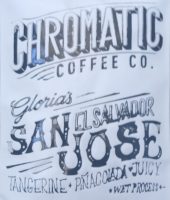 Serendipity’s always played a large part in the Coffee Spot, even from its inception over seven years ago when someone said “why don’t you start a basketball blog” and I thought “a coffee blog! What an excellent idea!”. No matter how much I plan, chance discovery always plays its part and today’s Meet the Roaster is no exception
Serendipity’s always played a large part in the Coffee Spot, even from its inception over seven years ago when someone said “why don’t you start a basketball blog” and I thought “a coffee blog! What an excellent idea!”. No matter how much I plan, chance discovery always plays its part and today’s Meet the Roaster is no exception
Visiting Chromatic Coffee was always part of the plan for my return to San Jose earlier this year. I’d heard great things about the coffee shop from my friend Richard on my first visit in 2017. Getting out to Santa Clara was also going to be the issue, so when Richard offered to drop me off on his way to work, I jumped at the chance.
Before I left, I had a long chat with the manager, who, on learning that I was staying in San Jose until the end of the week, suggested attending Chromatic’s public cupping, which takes place in the roastery every Thursday morning. And that led to me discovering that Chromatic’s roastery is a couple of blocks from Richard’s flat.
Naturally I went, enjoying not just the cupping, but also receiving a tour of the roastery to boot!
You can see how I got on after the gallery.
Chromatic Coffee began life in October 2012, with the original coffee shop in Santa Clara (which I’d visited earlier in the week) and a roastery, which for many years occupied a small space in downtown San Jose. However, at the start of 2018, to meet growing demand, Chromatic moved to its current location on Lincoln Avenue, where it occupies a small part of a large warehouse, reborn as the Midtown Arts Mercantile.
If you are planning on attending one of the public cuppings, Chromatic isn’t that obvious to the passer-by (and sadly I didn’t take any exterior shots, except the one of the loading bay). The Roastery is in Suite 10, accessed via the left-most entrance at the front of the building. Head on in, down a corridor and around a corner, where you’ll find Chromatic on the left. The space itself is split in two, with the roastery at the back and more office-like space at the front, which is where the cuppings take place.
Chromatic has two roasters, its original 12kg Probat and a more recent acquisition, an Opus 4. These days, the Probat, which has its own little room at the back, is mostly used to roast single-origins for filter (there was a Papua New Guinea single-origin being roasted while I was there). The majority of the roastery is given over to the Opus 4, from Brazilian manufacturer, Lilla. One of a handful of in the US, the Opus 4 has a 200lb drum with an effective capacity of 100lb (about 45kg).
This is a true behemoth, dominating the left-hand side of the roastery and surrounded by sacks of green beans. It’s sufficiently tall that a vacuum system is employed to suck the green beans from a large (manually-filled) hopper to the funnel at the top of the roaster, from where they’re dropped into the roasting drum. Despite its large, square metal casing, which makes it look rather different to most roasters I’ve seen, the internal workings are very similar, the roasted beans being deposited at the end of the process via a chute at the bottom of the drum into a large cooling pan. This employs an interesting fountain technique for cooling the beans which I’ve not seen before. Instead of stirring the cooling beans while drawing cold air through the base of the pan, the beans are instead cascaded into the air inside an inverted funnel.
The Opus 4 is mostly reserved for roasting the individual components of Chromatic’s various espresso blends, which forms the bulk of the roastery’s output. The individual components are then combined in a cement mixer to form each blend. This is probably the most manually intensive part of the process, with the staff filling the mixers from large buckets of roasted beans. From there, the beans are bagged up, ready to go.
The tour of the roastery over, we moved onto the cupping, which you can read about after the gallery.
Chromatic holds public cuppings every Thursday morning at 11 o’clock. No appointment is necessary; just turn up and say hello. My cupping was run by head roaster Sharon, who also gave me the tour of the roastery, while Chromatic’s co-founder and Chief Coffee Officer, Hiver, was also in attendance, providing my second bonus of the day.
11 different samples were cupped that morning, eight of which were production roasts (two single-origins and six espresso blend components). The remaining three were samples that Chromatic was evaluating, including two from Yunnan in China. As such, the cupping plays an important role in Chromatic’s quality control, as well as being open to the public.
We followed the usual cupping procedure, first of all smelling the ground beans to gain a first impression. Next each bowl is filled with hot water and, after four minutes, the surface of each cup is broken, the coffee being smelled a second time. Any residual coffee grounds are skimmed from the top of each bowl and the coffee is left to cool for a few minutes before the slurping starts. The slurp is very important, distributing the coffee over as wide as possible surface area in your mouth and I am rubbish at it!
I always find that I get very little out of the first round of slurping since my palate is very sensitive to heat. This cupping was no exception it was only on my second time around, after about 10 minutes, that I noticed significant differentiation between the coffees. Not that I could tell you very much about each coffee, mind, but I could tell you that they were different.
My favourite was a Colombian single-origin, which developed some nice, fruity notes as it cooled, while both Yunnan samples (both of which were washed coffees) also grew on me. Although I don’t get that much out of cuppings (I find tasting flights more interesting), I still appreciate them and should probably do more of them to help develop my palate. If you are ever given the opportunity to attend a cupping, I definitely recommend that you go.
Afterwards, I had a long talk with Hiver, who told me some of the history of Chromatic, including its focus on direct trade. As an example, the first farm Chromatic ever worked with is in San Jose, El Salvador. Chromatic is still buying from the farmer, Gloria, roasting coffee from San Jose, El Salvador in San Jose, California. To celebrate this, Hiver gave me a bag of the San Jose, plus a sample of the Papua New Guinea which I saw roasting.
Hiver also told me about a Robusta lot he tried on a recent visit to the Amazon. He liked it so much that he bought the lot and has been using it in Holy Mountain, an espresso blend. I tried it as a filter, where I could taste its influence (it’s 20% of the blend), but not in an unpleasant way. It’s a little more bitter than I’m used to these days, but I suspect that five years ago I would have adored it.
To round things off, I bought a bag of the Heart’s Desire espresso blend as a thank you to my friend Richard and a bag of Chromatic’s Colombian Sugar Cane decaf, which was awesome, keeping me company through the evenings for the rest of the trip.
October 2019: Chromatic now has a lovely coffee shop in the roastery, serving espresso-based drinks and batch brew using the new Ground Control Cyclops. There’s also a selection of pastries from Manresa Bread if you’re hungry. You can see what I made of it when I visited in January 2020.
December 2019: Chromatic Coffee was a runner-up for the 2019 Most Passionate About Coffee Award.
| 460 LINCOLN AVENUE • SAN JOSE • CA 95126 • USA | ||||
| www.chromaticcoffee.com | +1 408-217-8583 | |||
| Monday | By Appointment | Roaster | Chromatic (espresso + filter) | |
| Tuesday | By Appointment | Seating | N/A | |
| Wednesday | By Appointment | Food | N/A | |
| Thursday | Public Cupping, 11:00 | Service | N/A | |
| Friday | By Appointment | Cards | N/A | |
| Saturday | CLOSED | Wifi | N/A | |
| Sunday | CLOSED | Power | N/A | |
| Chain | Local | Visits | 25th April 2019 | |
If you liked this post, please let me know by clicking the “Like” button. If you have a WordPress account and you don’t mind everyone knowing that you liked this post, you can use the “Like this” button right at the bottom instead. [bawlu_buttons]
Don’t forget that you can share this post with your friends using the buttons below.

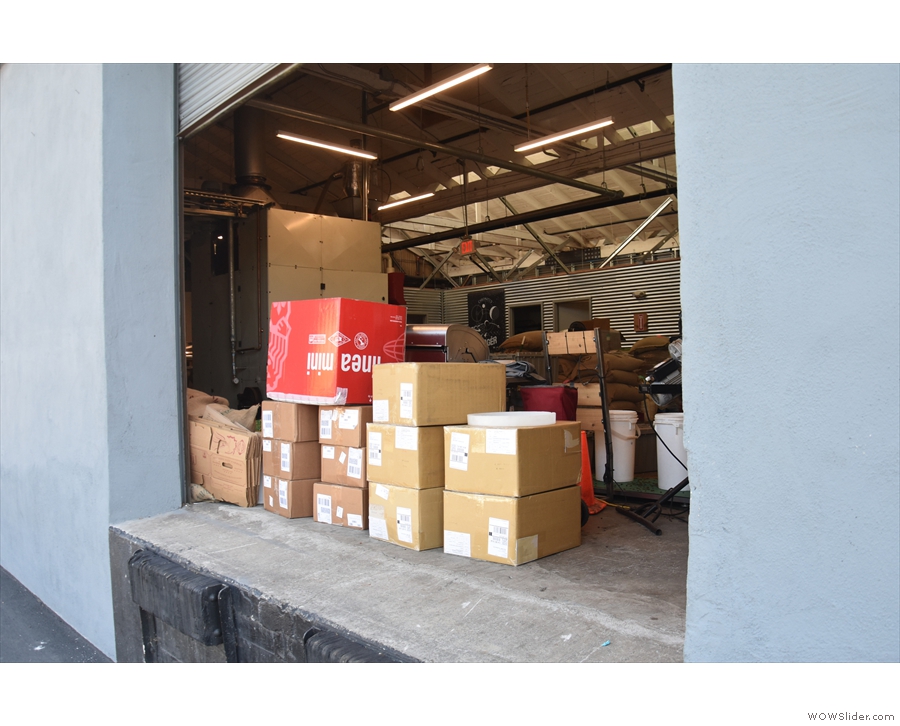
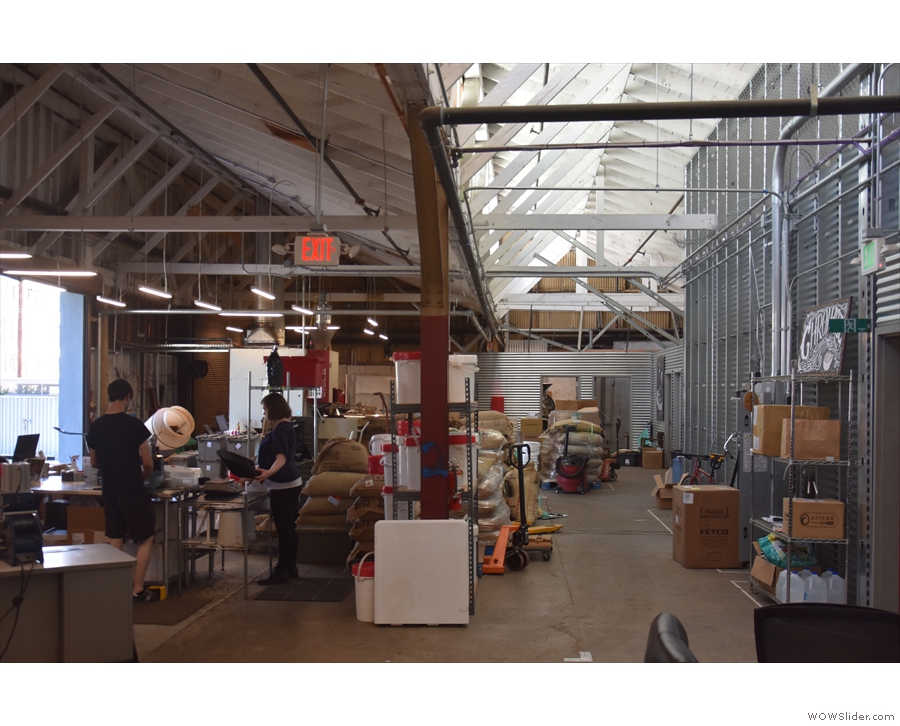
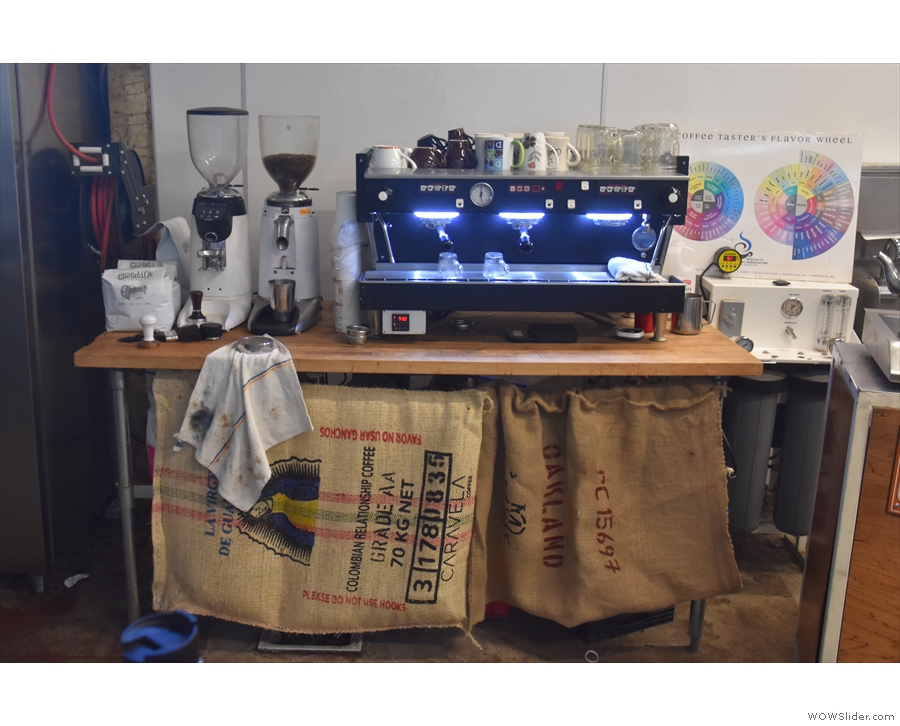
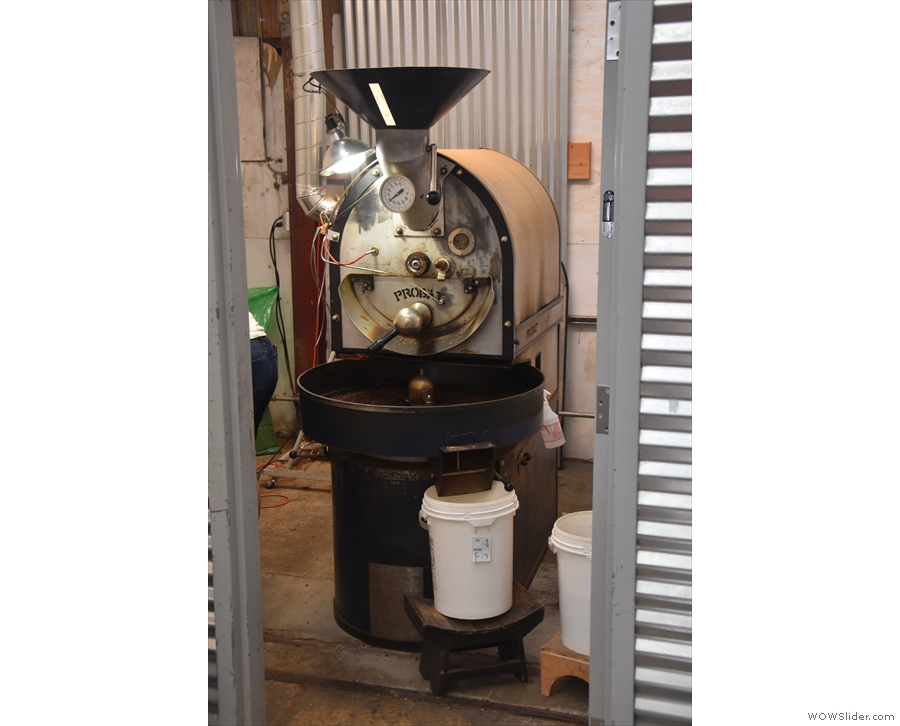
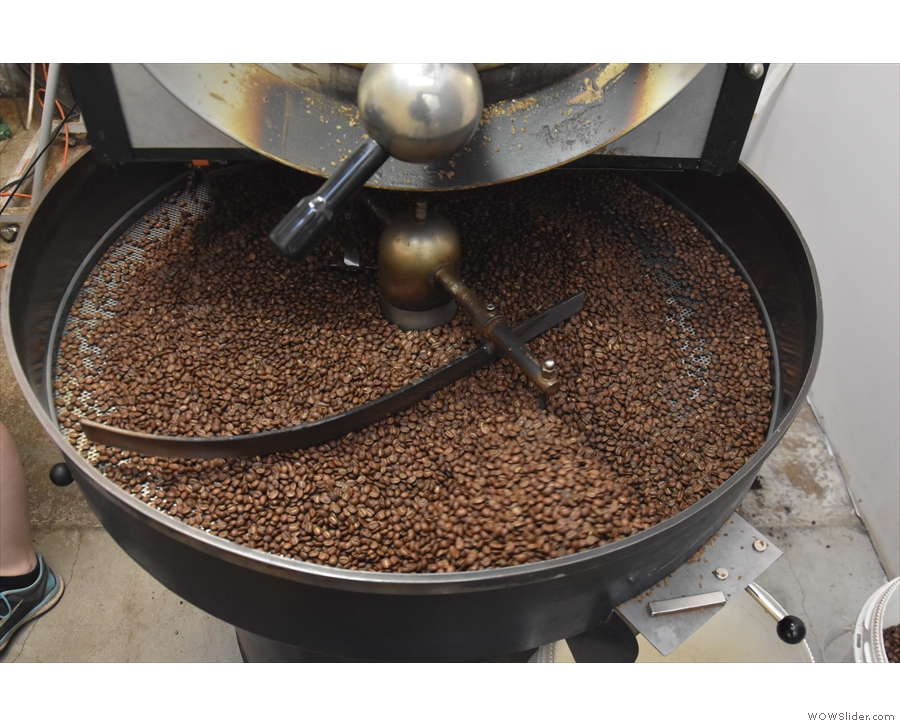
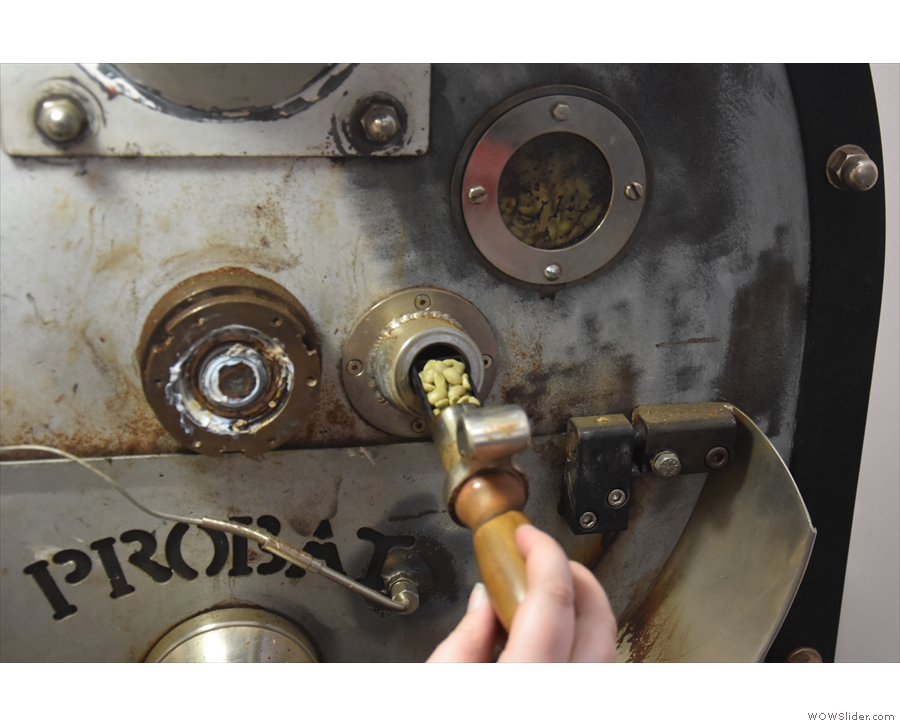
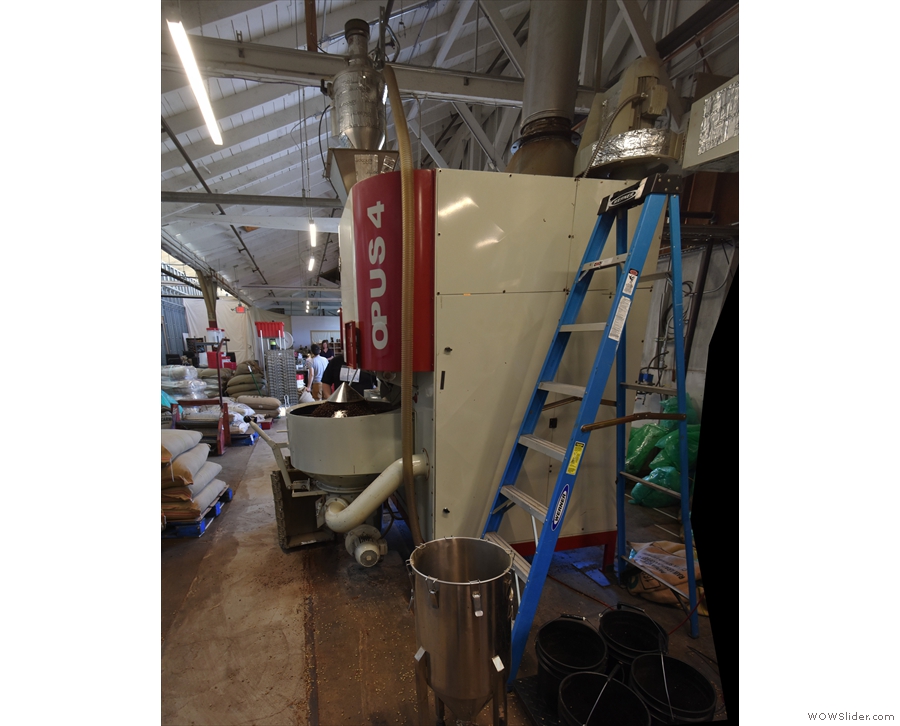
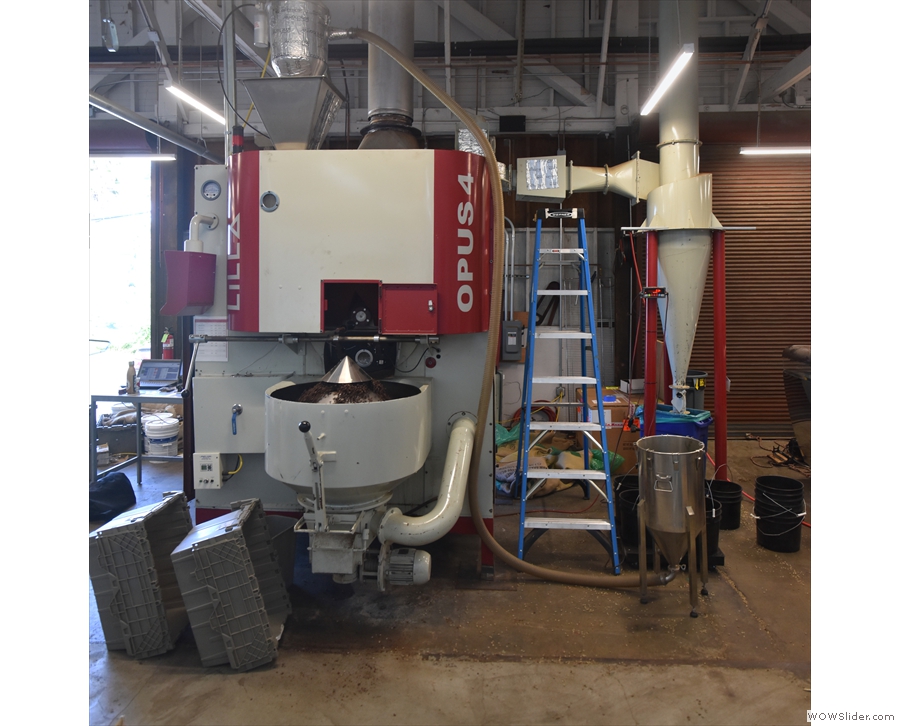
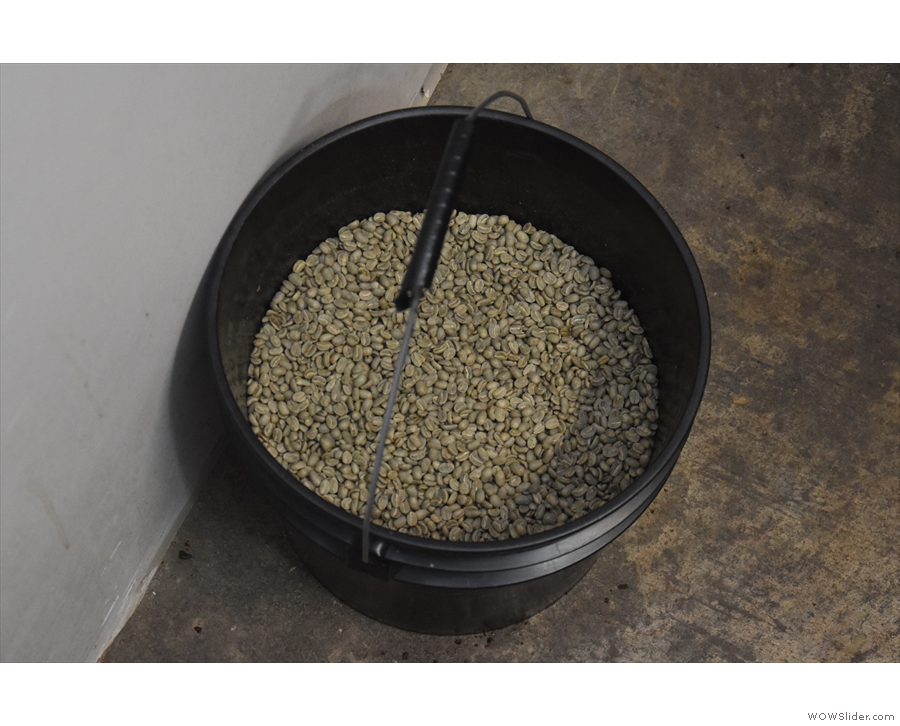
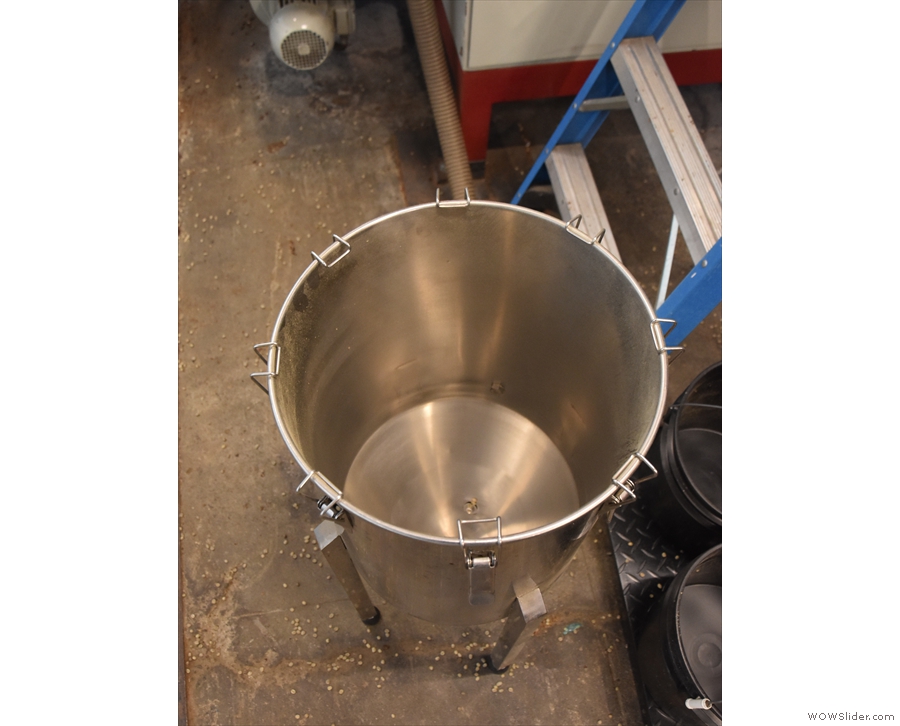
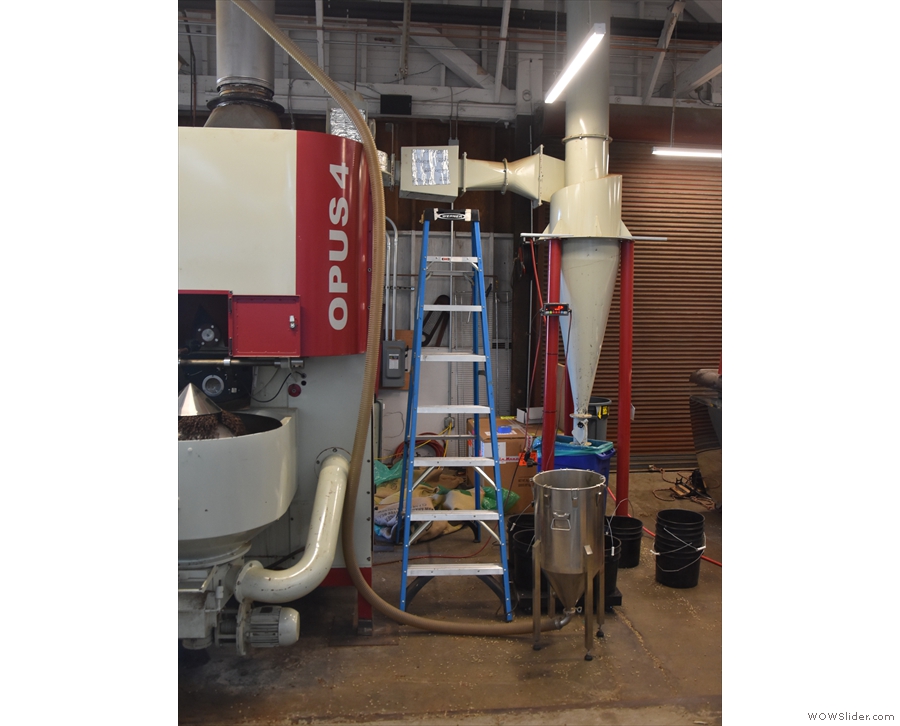
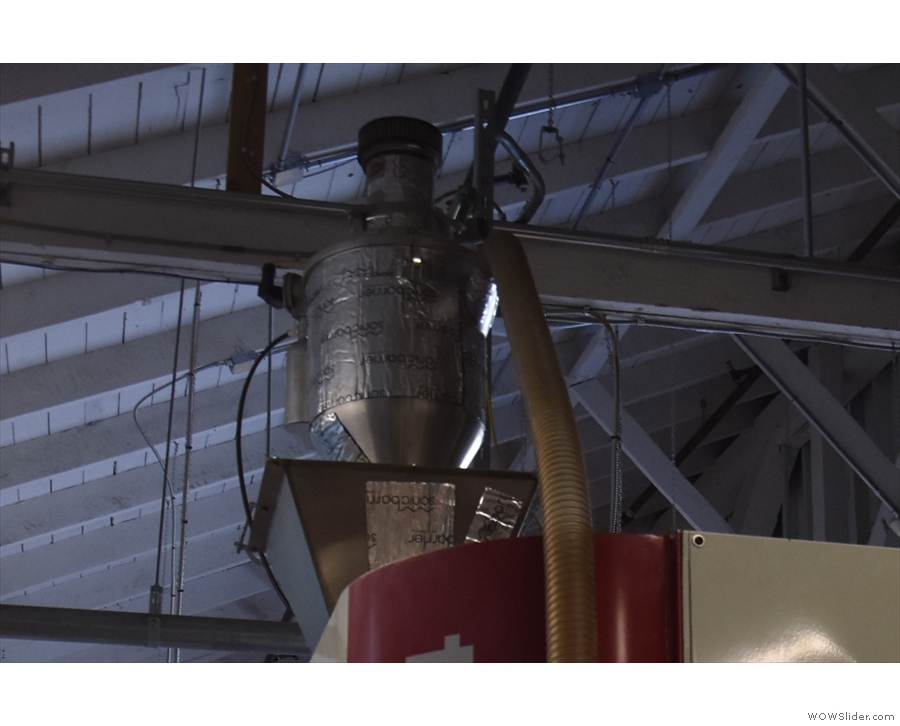
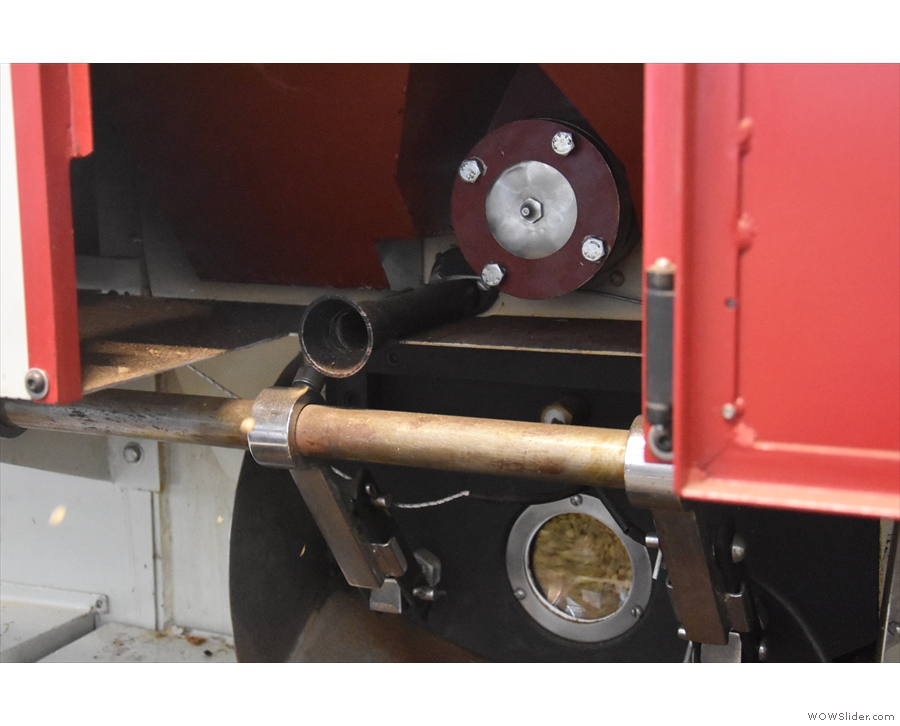
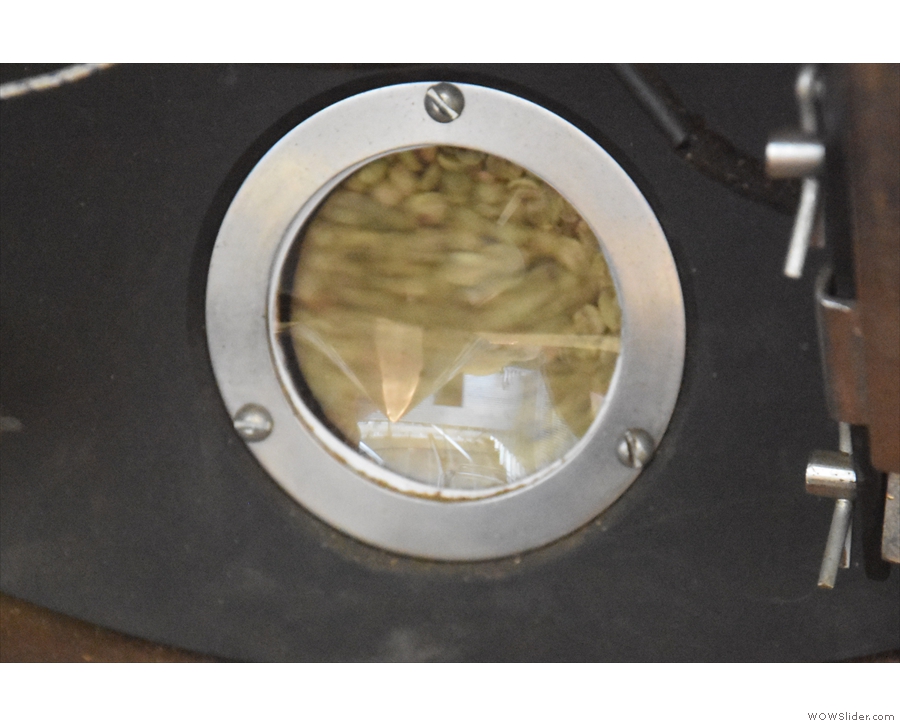
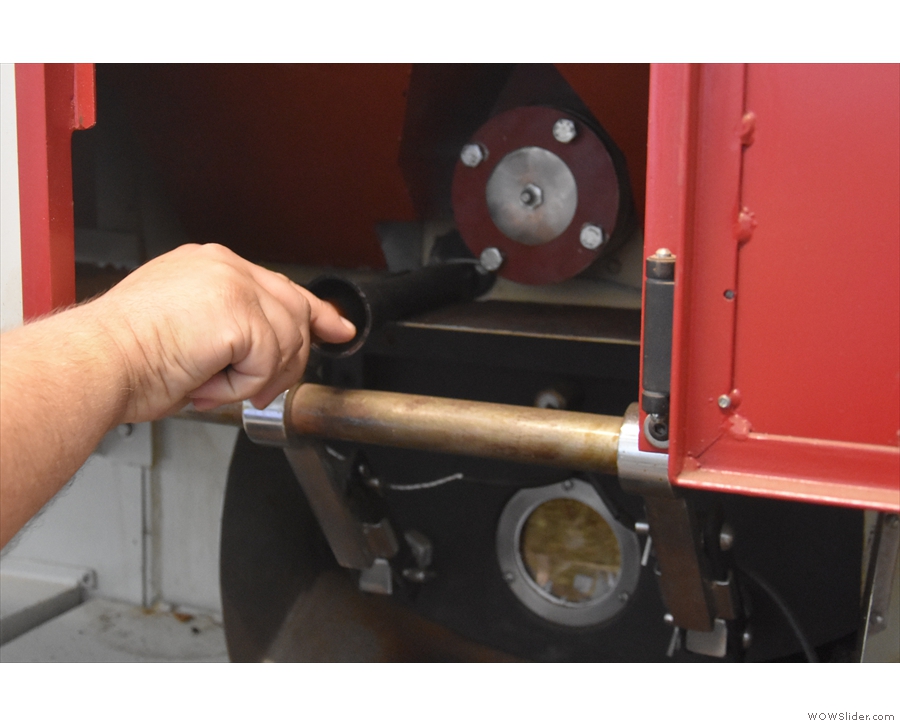
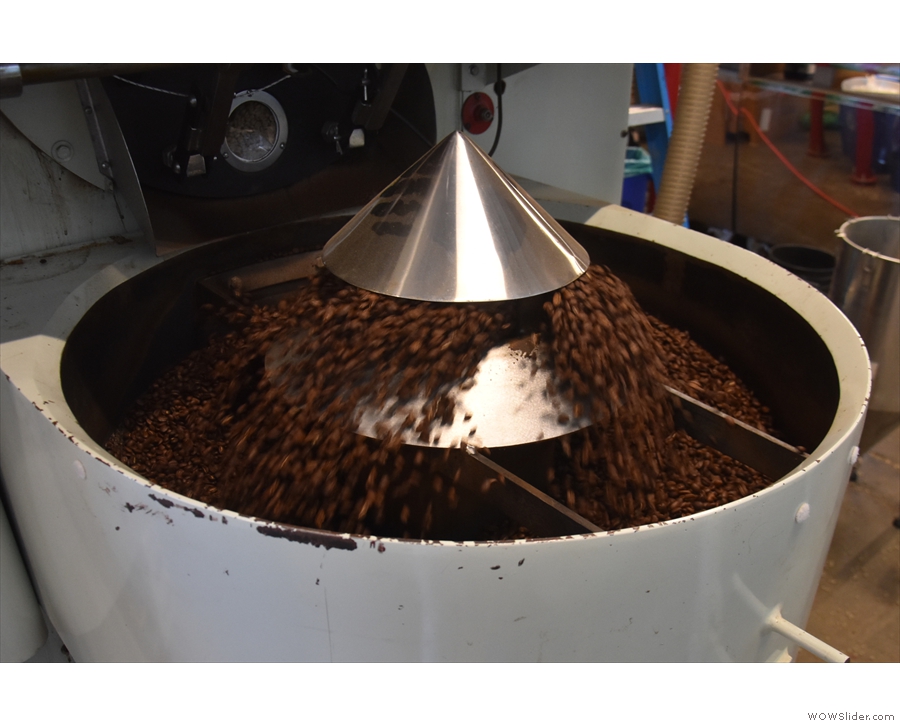
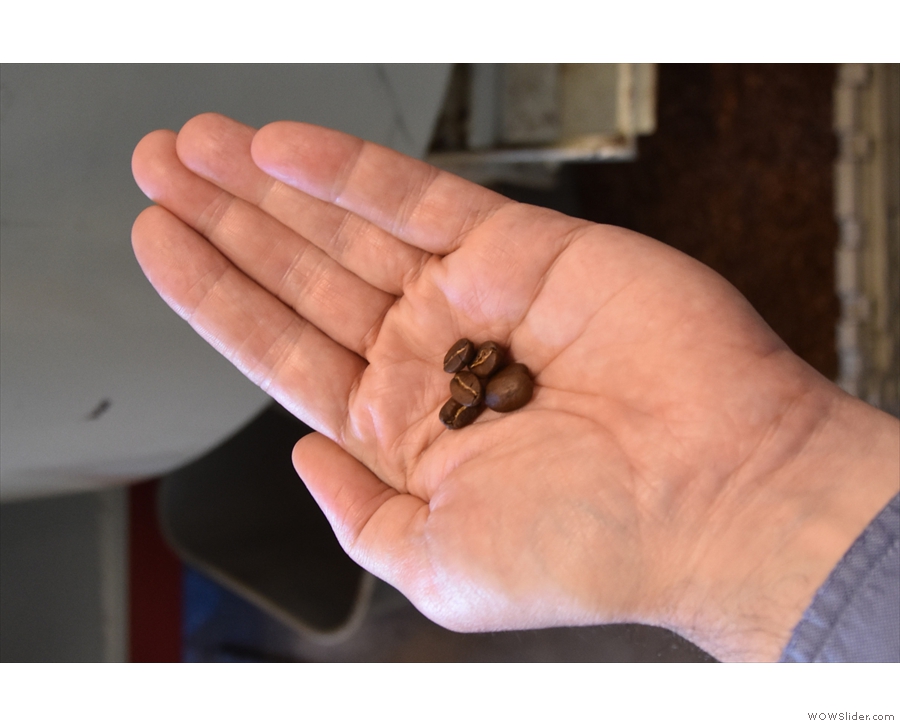
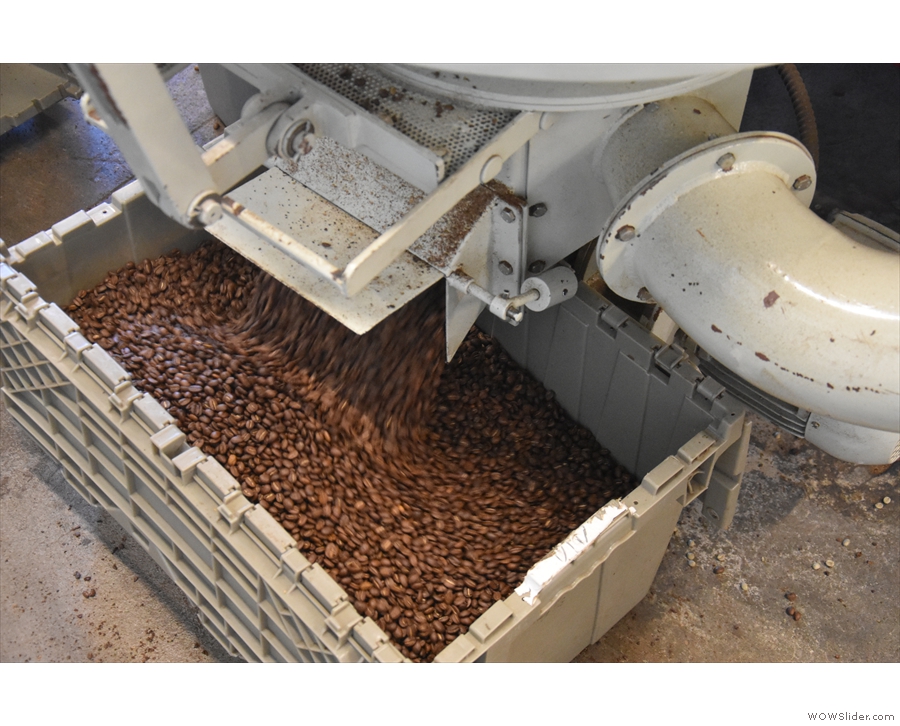
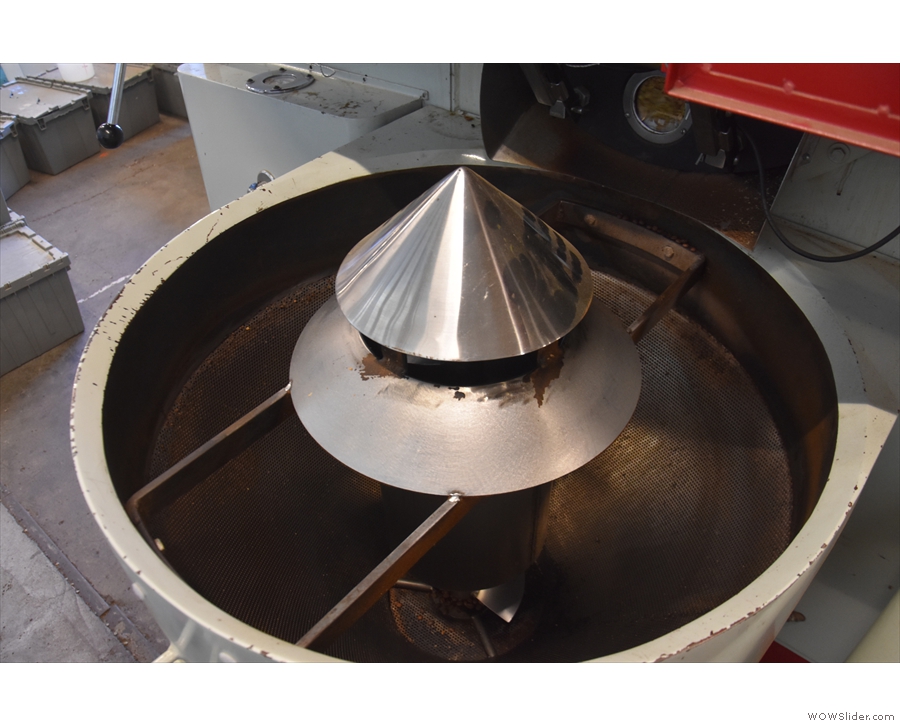
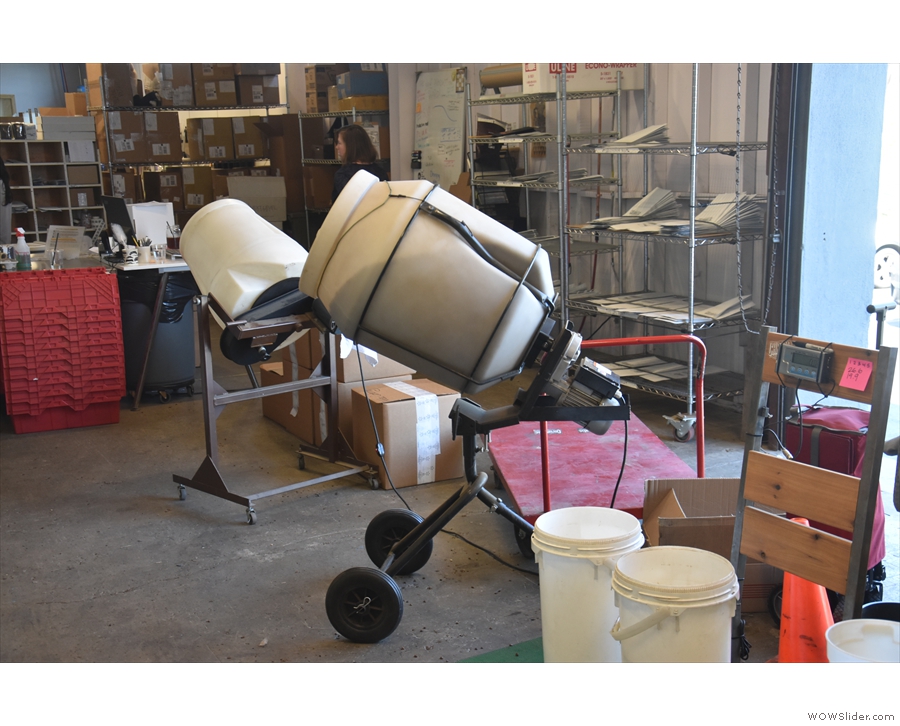
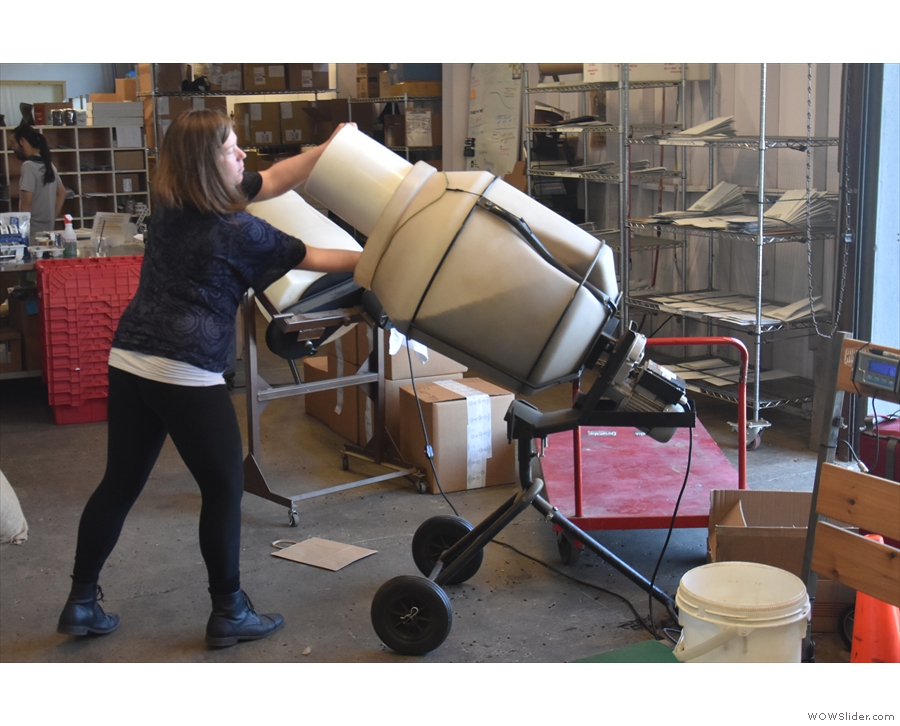
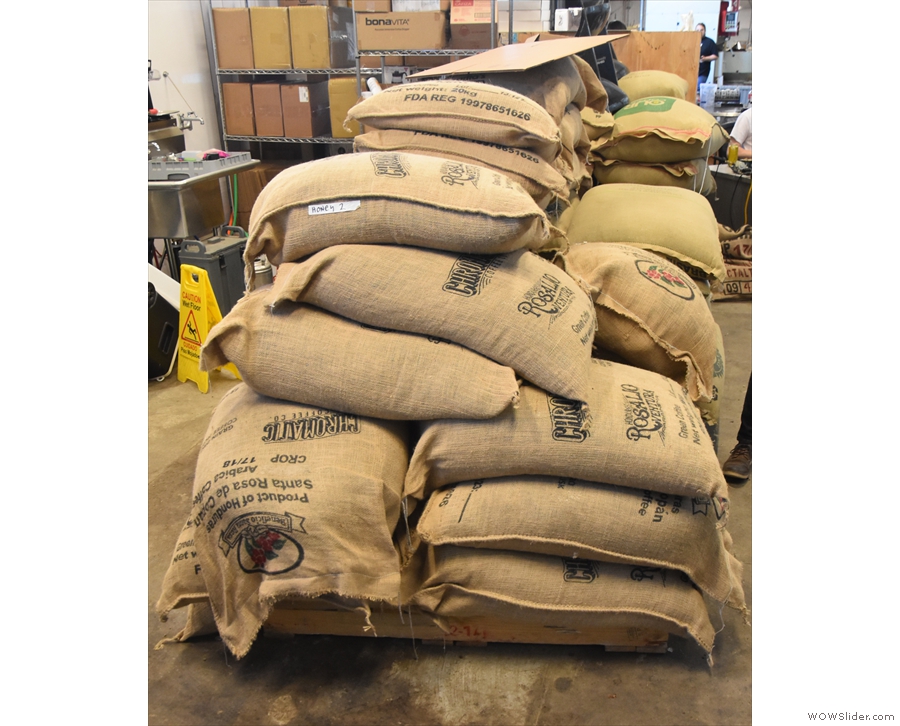
 1
1 2
2 3
3 4
4 5
5 6
6 7
7 8
8 9
9 10
10 11
11 12
12 13
13 14
14 15
15 16
16 17
17 18
18 19
19 20
20 21
21 22
22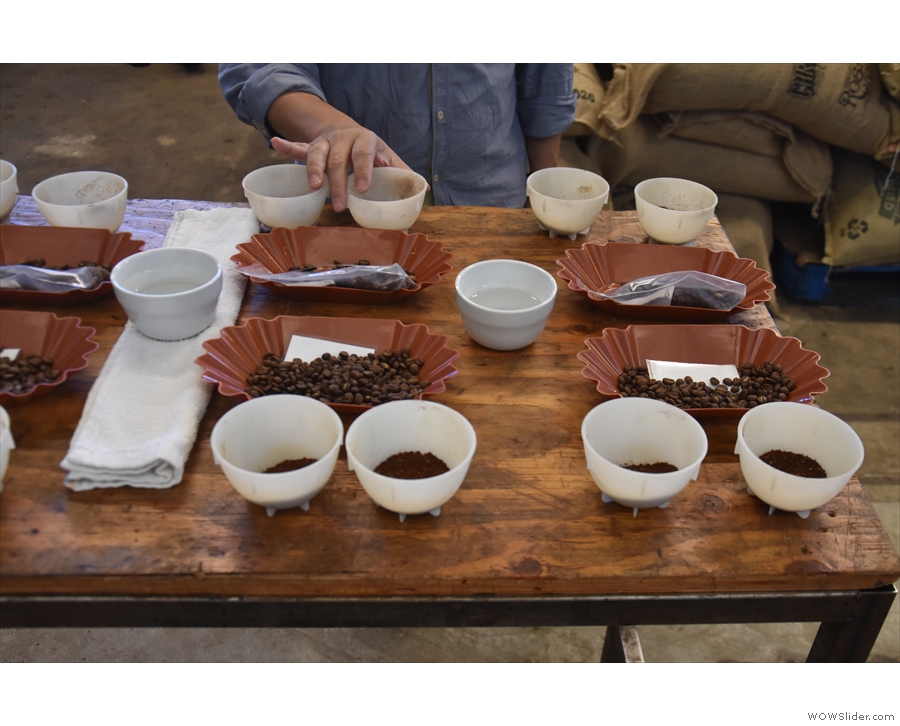
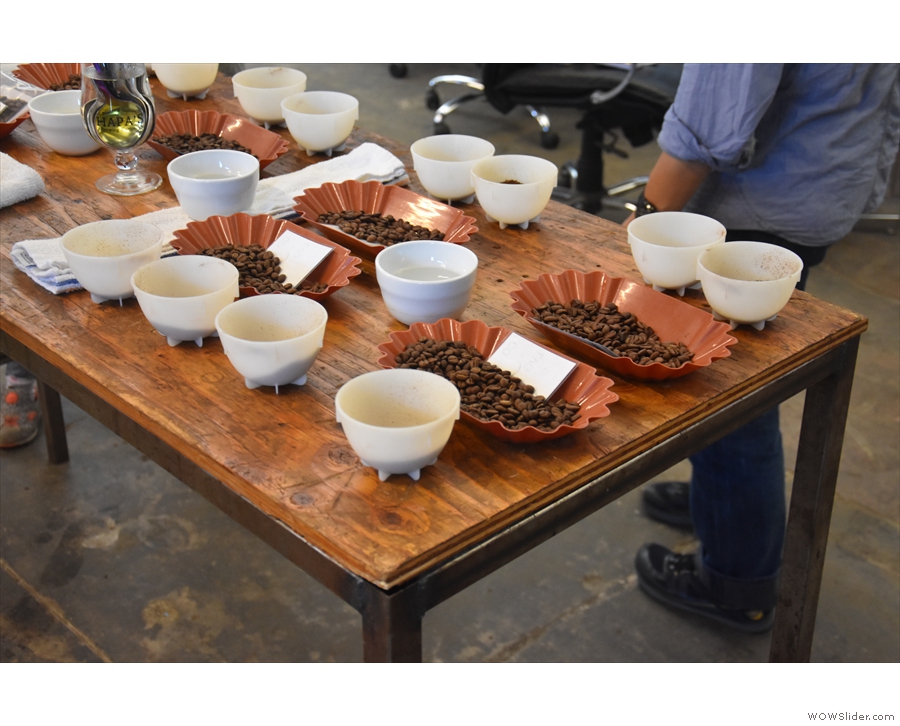
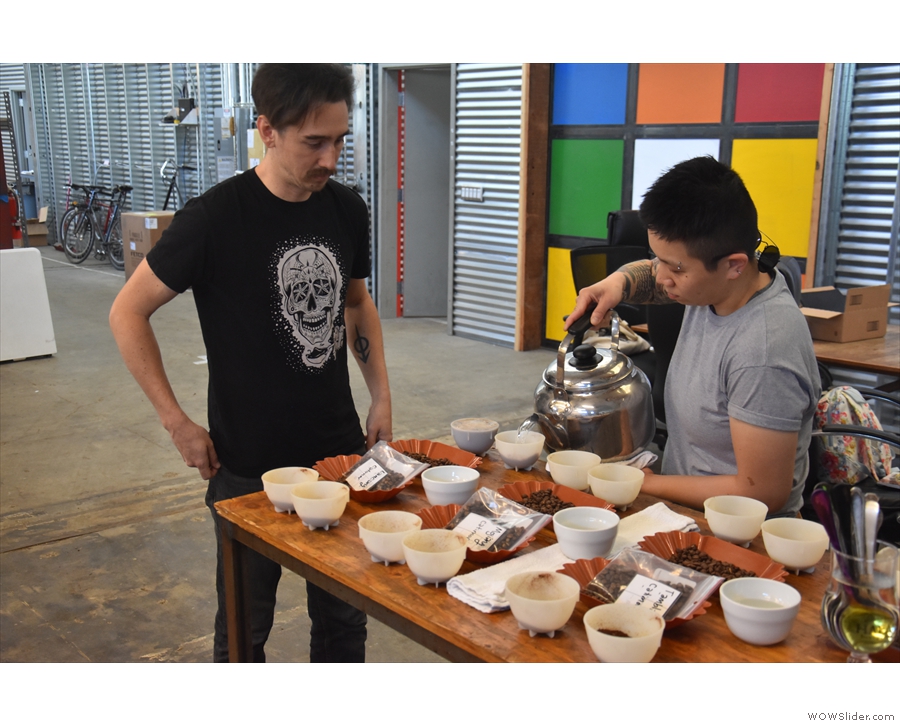
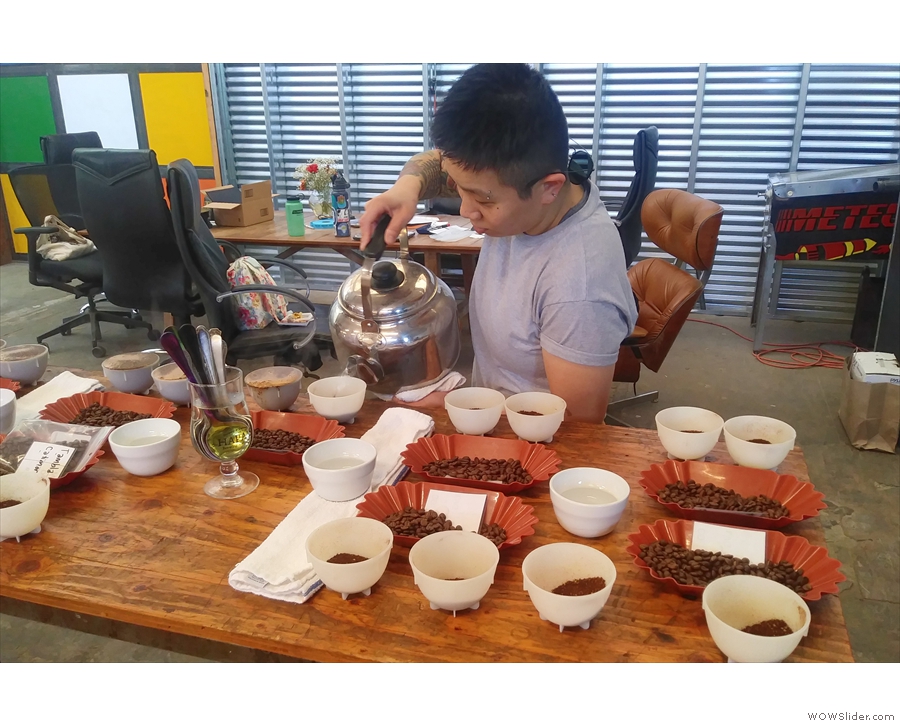
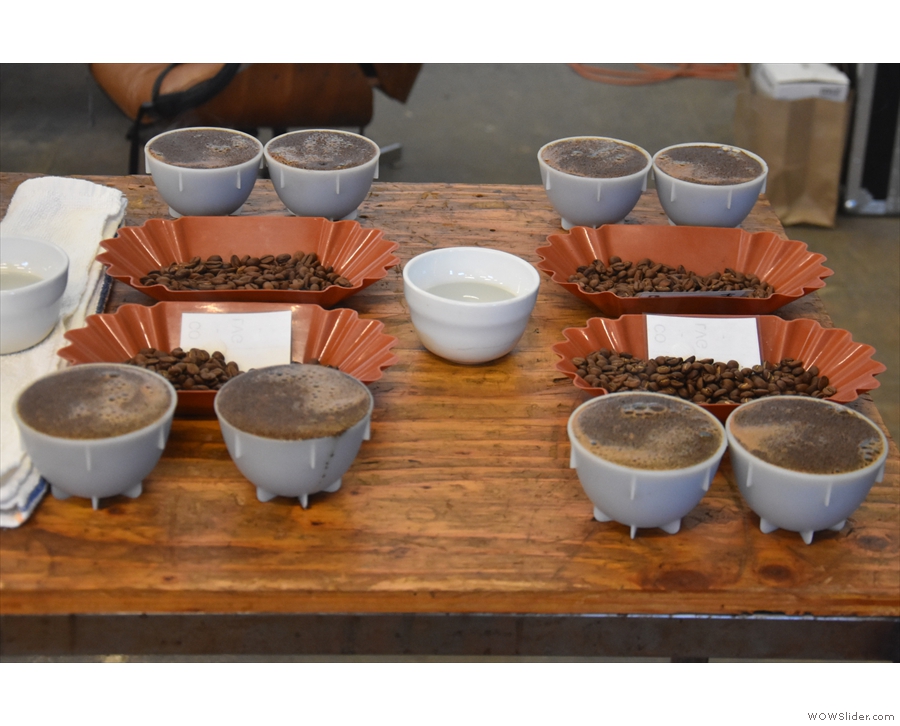
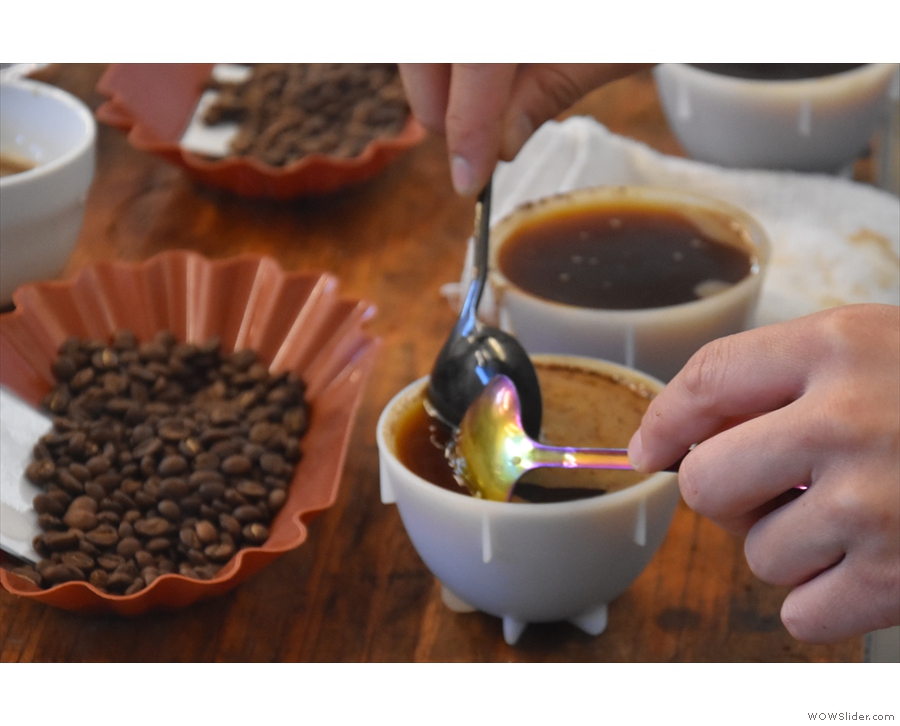
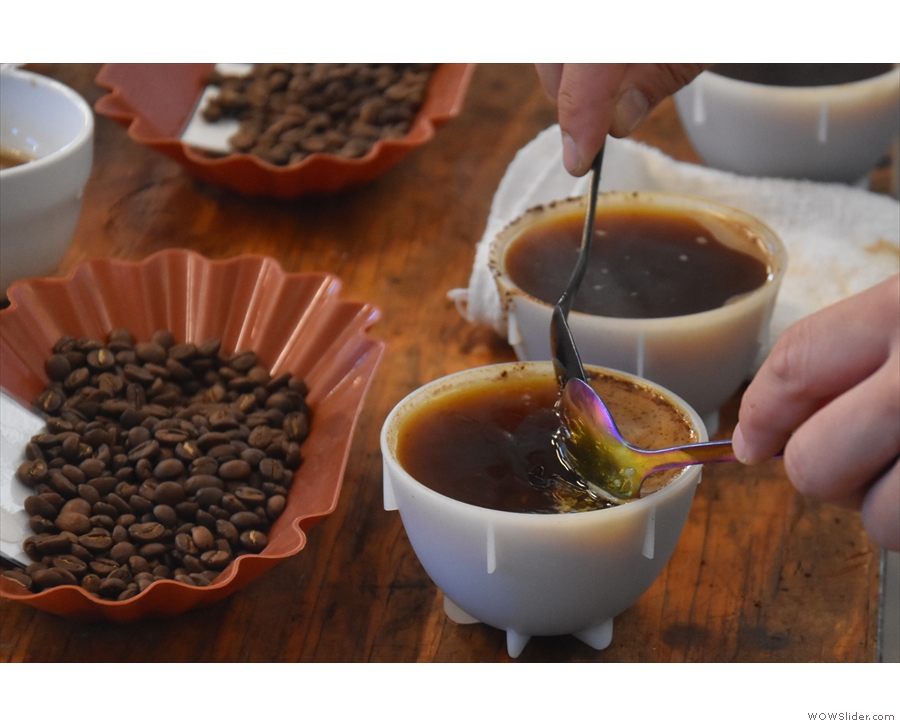
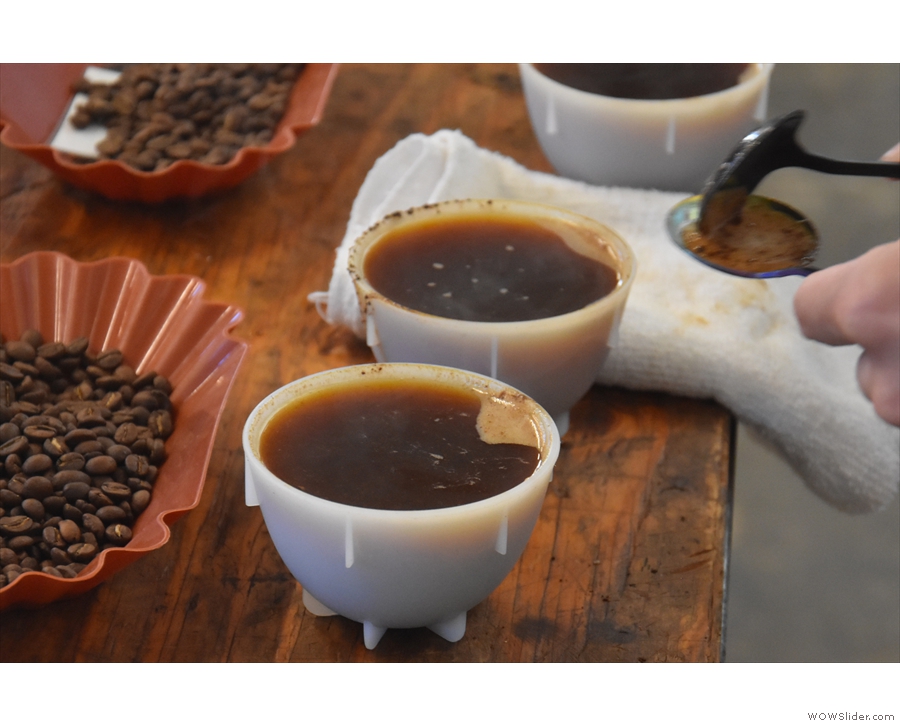
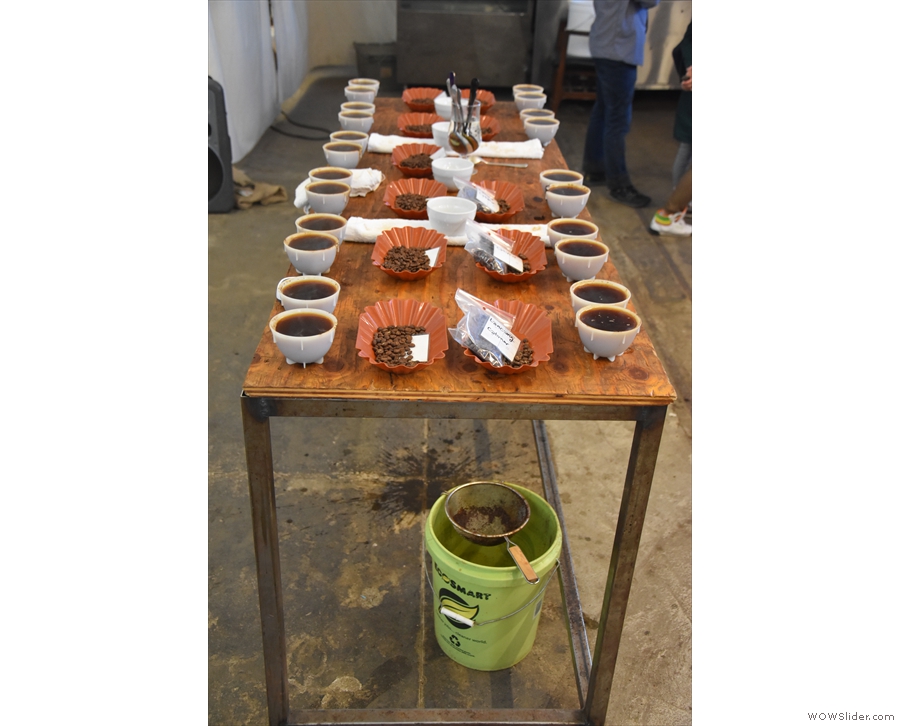
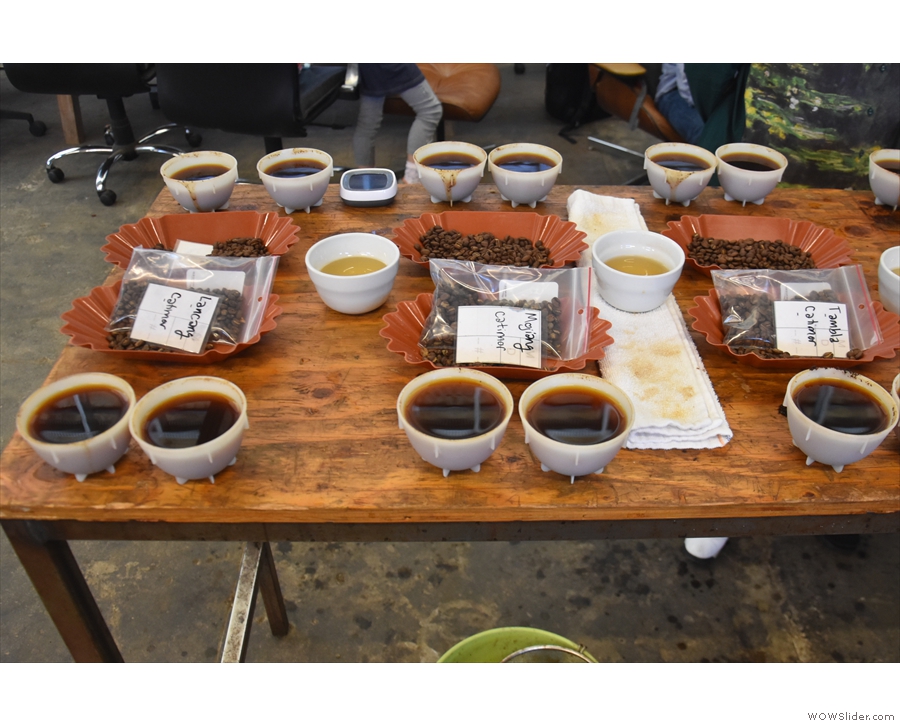
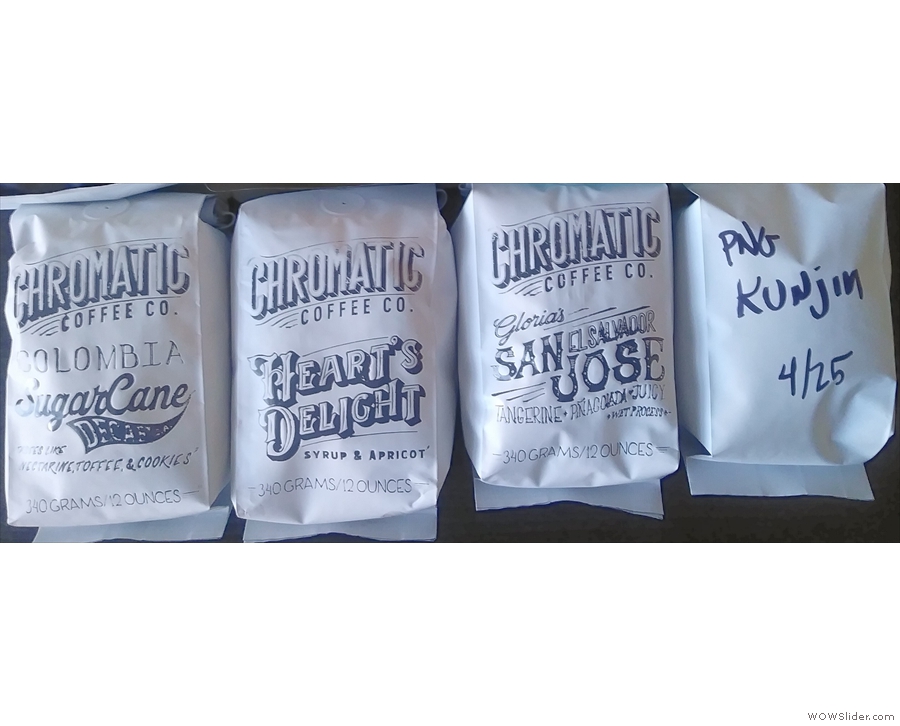
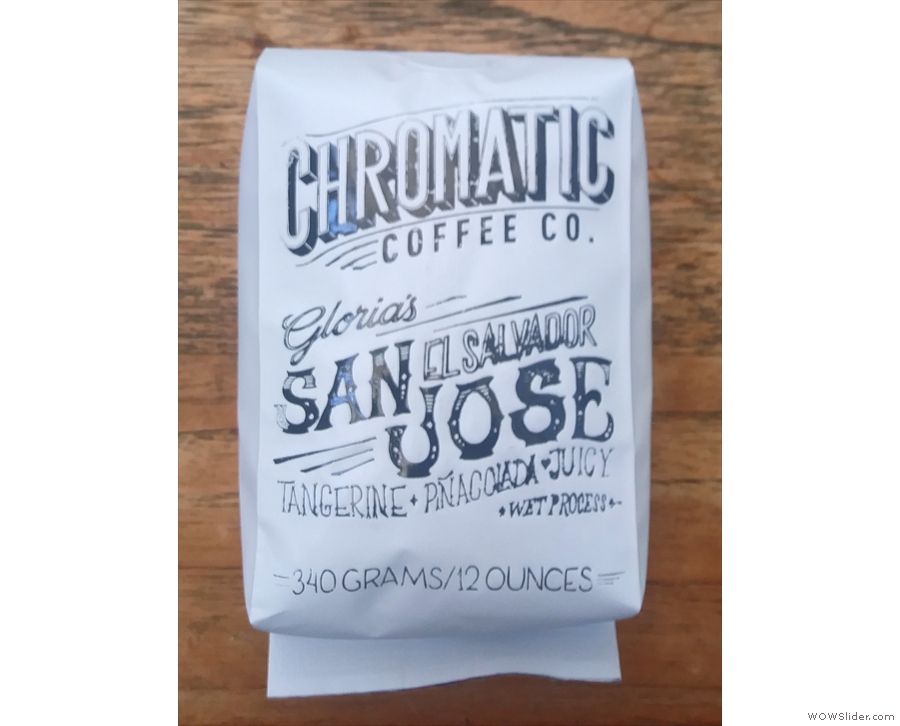
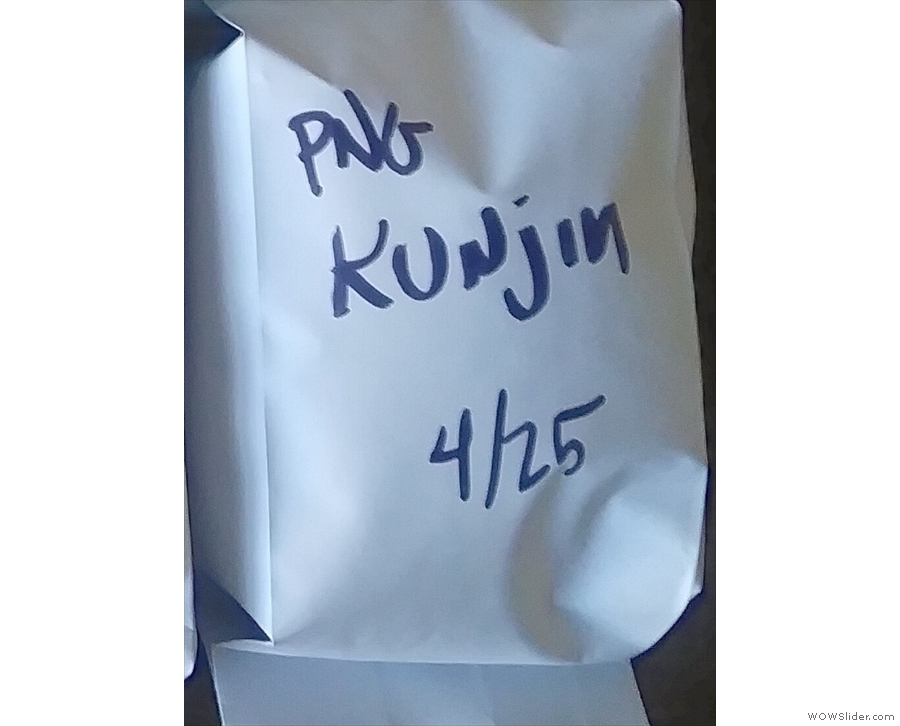
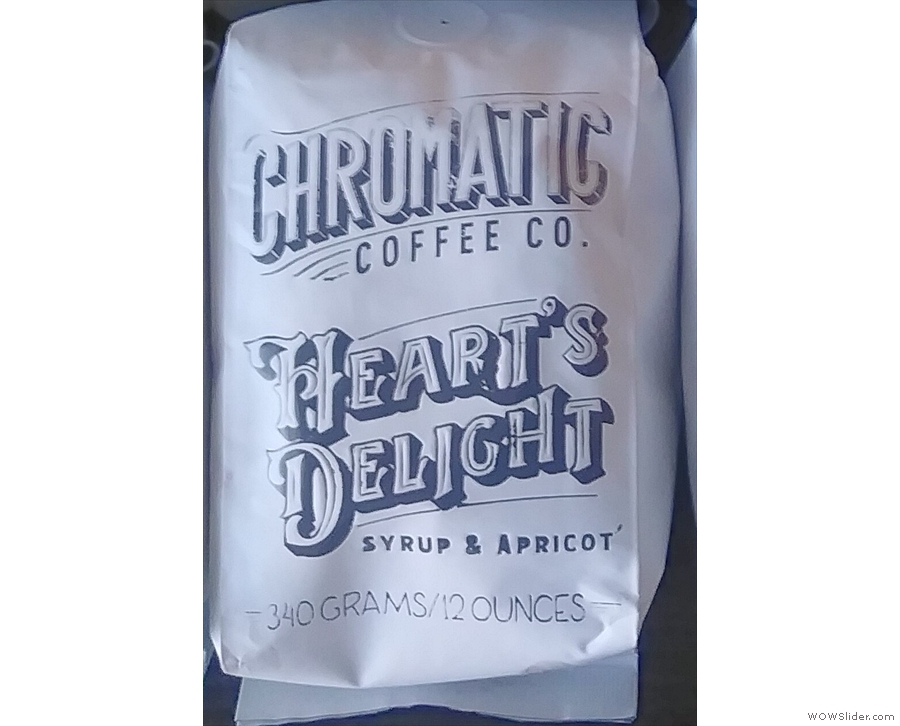
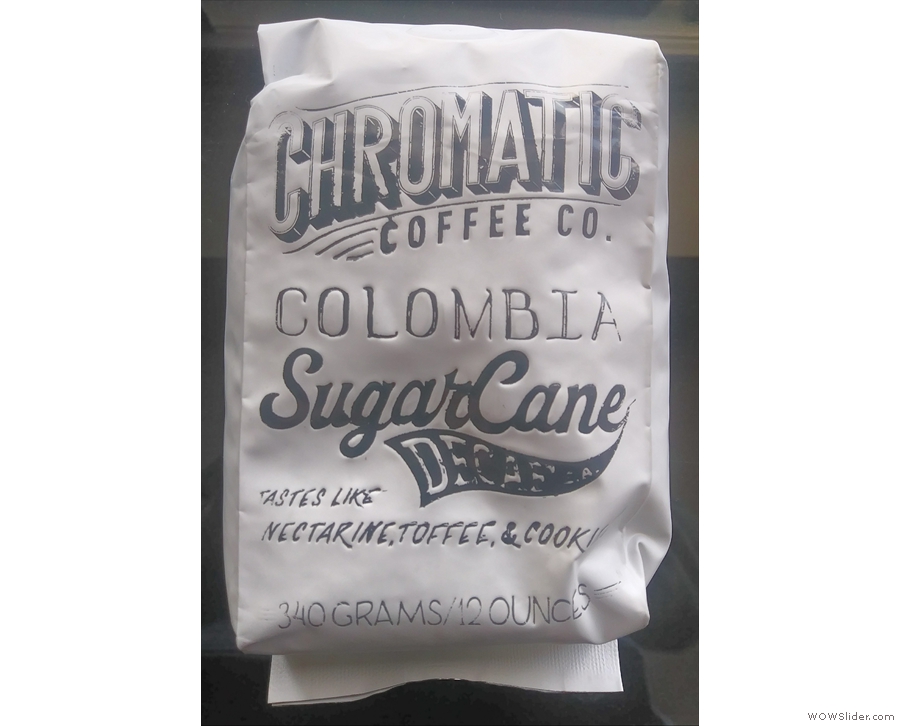
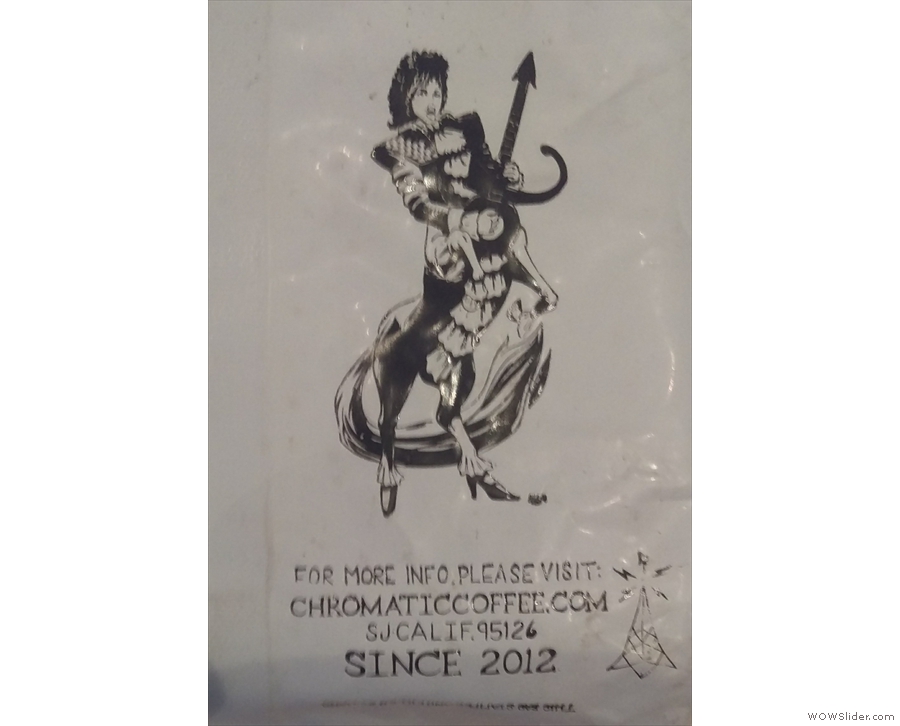
 1
1 2
2 3
3 4
4 5
5 6
6 7
7 8
8 9
9 10
10 11
11 12
12 13
13 14
14 15
15 16
16
Pingback: Chromatic Coffee, Santa Clara | Brian's Coffee Spot
Pingback: Chromatic Coffee Roastery Cafe | Brian's Coffee Spot
Pingback: Cupping at Tandem Coffee Roasters | Brian's Coffee Spot
Pingback: Making Coffee at Home: Coffee, Part III | Brian's Coffee Spot
Pingback: 2020 Awards – Best Neighbourhood Coffee Spot | Brian's Coffee Spot
Pingback: 2020 Awards – Best Roaster/Retailer | Brian's Coffee Spot